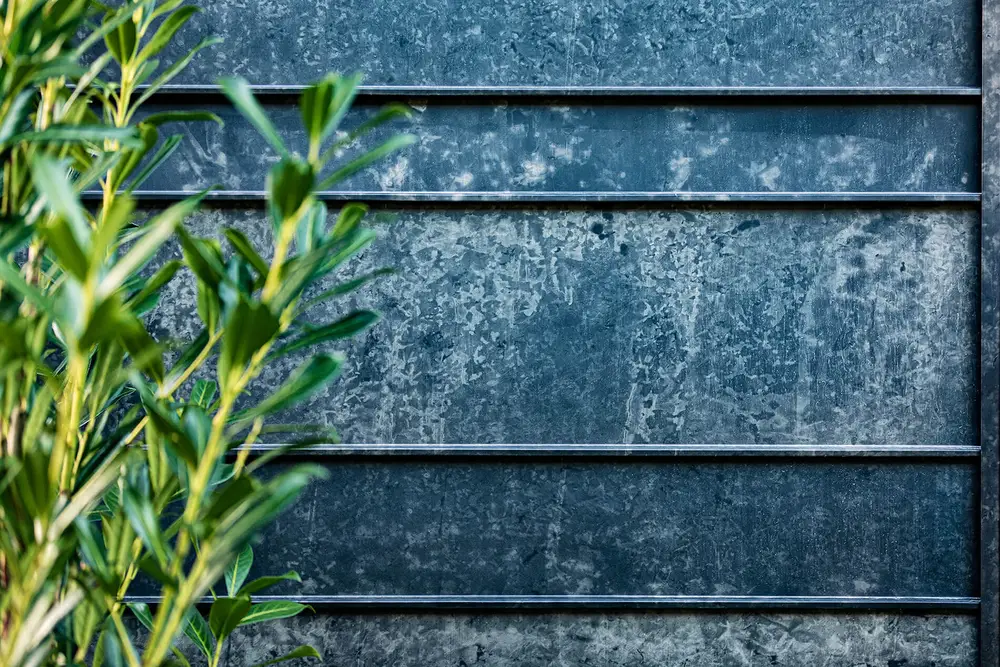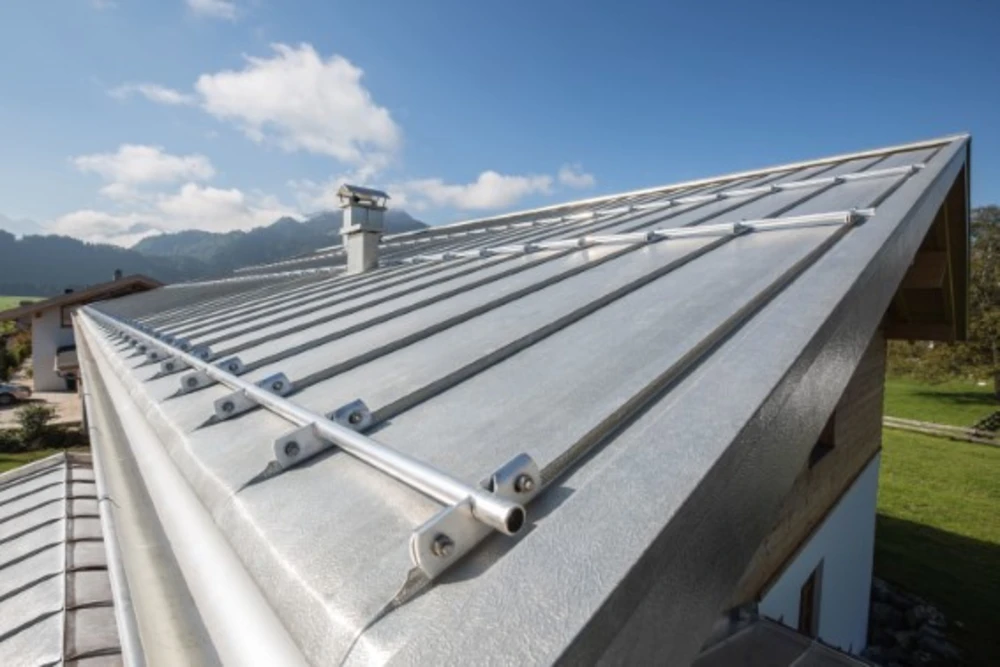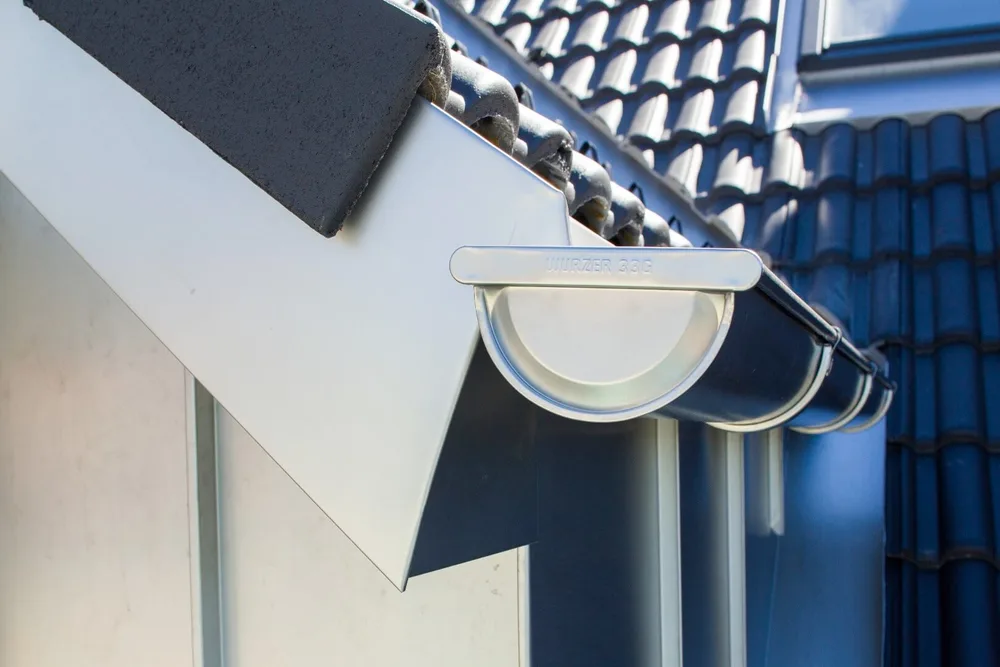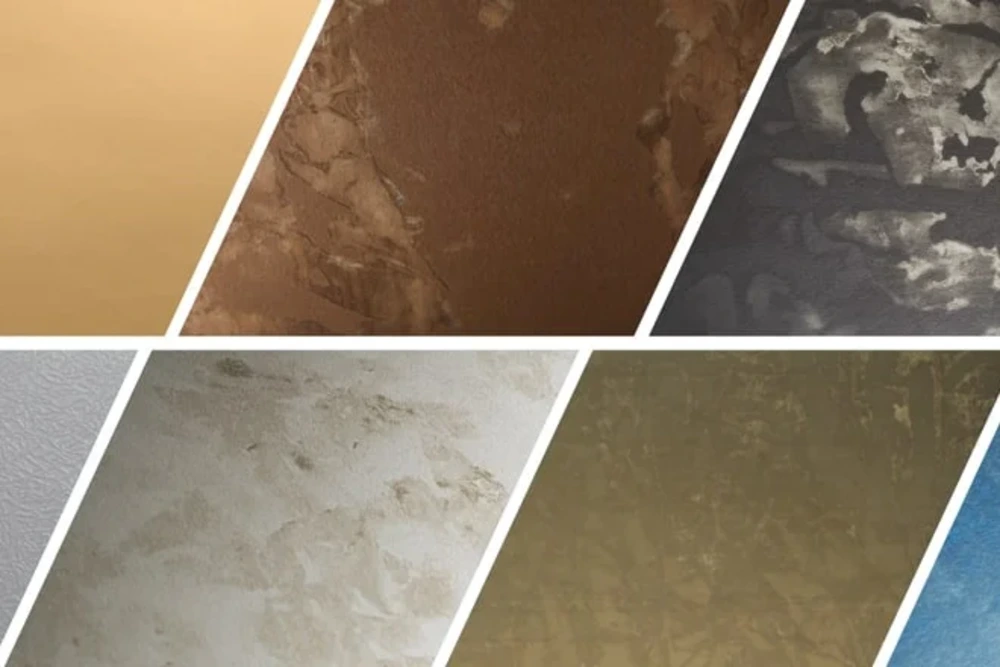The main components of a rooftop power plant are, on the one hand, the mounting platform including its substructure and, on the other hand, the solar power plant itself. In addition to the performance data and the general life expectancy of the power plant, three characteristics are of particular importance: the strength, durability and longevity of the roof. The trio is closely followed by aesthetics and design - we agree with you that it's the overall picture that counts.
The art is to make safety go hand in hand with beauty. Roofinox has mastered this art like no other.
Roofinox knows what is important for a solar roof
Building sustainably and living in an environmentally conscious way is the order of the day. The number of people who want to be as self-sufficient as possible, reduce their ecological footprint and save costs in the long term is also increasing. Modern builders and future-oriented clients are thinking about tomorrow. This creates new challenges in house planning and construction, especially for architects.
Renewable energy systems such as photovoltaic and solar modules are difficult for many planners to integrate, at least in terms of aesthetics. However, photovoltaic and solar systems can actually be integrated into the overall appearance of a house in an attractive and simple way. On pitched roofs, flat roofs and monopitch roofs - you just have to know how.
The GenerationRoof Flex package makes everything possible
A 60-year guarantee is a lot, and yet that is exactly what we at ROOFINOX offer you for roof systems and surfaces. Every ROOFINOX roof is a generational roof. It guarantees durability, excellent value for money and beauty for generations. The ROOFINOX Flex package in particular is also the ideal substrate for any photovoltaic and solar system. The time for installation can be chosen flexibly - ROOFINOX offers architects and building owners virtually all the time in the world.
The life expectancy of a ROOFINOX roof is around 250 years. In comparison: the life expectancy of PV systems and solar systems is around 30 years. It is a simple calculation that shows: a ROOFINOX roof survives significantly longer than a solar system generation. Anything is possible with the ROOFINOX Flex roof.
This is precisely why the Flex roof is your ideal platform from the outset. Another roof that doesn't even last as long as the attached solar modules simply doesn't make sense. Imagine your roof failing before the solar system even needs to be replaced - that would be a financial disaster and also cause considerable environmental damage. So what exactly should you pay attention to so that the solar system is on a stable and secure (roof) base?
Was ist wichtig?
Wichtig ist, dass…
- das Falzdach der Punktbelastung von Photovoltaik- oder Solarmodulen standhält.
- die Hafte und Schrauben ausreichend Widerstand und Tragfähigkeit bieten.
- die Falzklemmen genau richtig angezogen sind, so dass die Klemmfestigkeit gewahrt bleibt.
- die natürliche Ausdehnung des Dachs noch immer möglich ist.
- es zwischen Panel und Dach keine Kontaktkorrosion gibt.
- das Solardach auch großem Druck, z. B. von Schnee, Wind oder Starkregen, standhält.
- die PV-Anlage oder Solaranlage sowie das Dach auch bei starkem Sog fest verankert bleiben.
- eine Unterkonstruktion mit Widerhaken verwendet wird, die ein Abziehen verhindert.
- der Wartungsaufwand der Solarmodule und vor allem des darunterliegenden Dachs möglichst gering ist.
- die Kosten richtig kalkuliert werden, um langfristige Ersparnisse und bares Geld zu sichern.
- die Anforderungen je nach Dachform ausreichend berücksichtigt werden.
Pitched roof, flat roof and monopitch roof as the basis for the solar panels
PV systems and solar panels are most frequently installed on roofs. The reason for this is both pragmatic and obvious: this is where the sun's rays hit the collectors at the best possible angle, enabling maximum energy yield. Depending on the shape of the roof of the planned or existing house, it is important that the particular features are taken into account for installation at the latest.
Photovoltaic and solar systems on pitched roofs
The pitched roof is the most common platform for solar power systems, as the pitch of around 35 degrees ensures a very good energy yield. In addition, the panels can usually be installed facing south without any problems. Suction forces have less of an effect than on flat roofs, for example, but expert installation is still essential.
Photovoltaic and solar systems on flat roofs
Due to the non-existent or very low slope of flat roofs, forces such as wind have a particularly strong effect on this roof shape. In order to achieve good energy yields here too, the solar and PV systems are mounted on inclined stands. This makes them resemble a sail in the wind, which is why they have to be weighted down with additional ballast. The roof structure must also be able to withstand this additional weight. To ensure this, the load-bearing capacity must be checked in good time.
Photovoltaic and solar systems on pitched roofs
Photovoltaic and solar modules can also be safely installed on monopitch roofs. As this type of roof is only pitched on one side, the direction of the pitch is important for installation. In many cases, the orientation and pitch mean that a stand construction is used.
Roofinox paves the way to solar energy success
Integrating solar thermal and photovoltaics is a challenge for architects and installers, but it can and should be simple: teaming up with truly knowledgeable experts paves the way to great results. With many years of experience, the unique HFX stainless and guaranteed safety, ROOFINOX is the expert you are looking for in the best solar platform. Yes, sometimes good things are so close.
We offer you everything that is essential for a solid and safe roof with roof structures such as PV modules and solar panels:
- the underlying roof substructure.
- the roof covering on top (e.g. standing seam roof, shingle roof, dormer roof, roof panels).
- the attachment with suitable clips and screws.
ROOFINOX provides expertise for safety and beauty on the sunny side of your projects. Contact us, we look forward to a good cooperation!
Solar roof FAQ on roofing, roof structure, construction and installation
Is it better to cover small or large areas with photovoltaic or solar modules?
In principle, the size of the area for photovoltaic and solar systems can be chosen individually, especially for aesthetic reasons. In terms of cost-effectiveness and the simplest possible installation, large and contiguous PV systems and solar panels are preferable.
Does a solar roof necessarily have to face south?
No. Solar cells can now also be installed facing east or west without any major loss of yield. On the one hand, because the sun's rays are increasingly stronger in the morning and afternoon, and on the other hand, because the maximum nominal output required for self-consumption is still easily achieved.
What needs to be considered if panels are to be installed (retrospectively) in the future?
With the ROOFINOX Flex Generation Roof, solar or PV systems can also be retrofitted at any time. Whether directly during house construction or years later, the same aspects must always be taken into account. Later installation does not entail any disadvantages; it should simply be planned as an option from the outset. This ensures that the load-bearing capacity and stresses caused by the additional weight and wind suction forces do not impair the safety of the roof.
Why is the Flex Generation Roof from ROOFINOX particularly suitable as a platform for solar and PV systems?
The ROOFINOX Flex roof is durable, low-maintenance and can be individually adapted to any roof shape using clips and screws. On average, solar cells need to be replaced after around 30 years, but the ROOFINOX Generation Roof can withstand wind and weather for over 250 years. This means that new solar and PV modules can be installed on a roof again and again without the roof having to be renovated or replaced beforehand. This saves time, nerves and money.
What are the general advantages of installing a photovoltaic or solar system?
Temperatures are rising, record-breaking summers are regularly predicted and the need to cool buildings is increasing. Electricity from renewable energies is ideal for this purpose. It is also cheaper and therefore sustainable for both the environment and your wallet.






